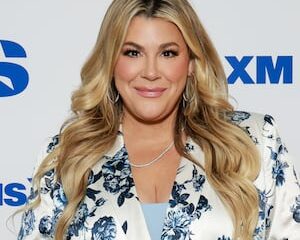Health
Study Reveals Birth Sex Ratios Are Not Just 50-50 Chance

A recent study published in the journal Science Advances indicates that the odds of having a boy or girl are not purely a matter of chance. Instead, the research suggests that these odds resemble flipping a weighted coin, influenced by factors unique to each family. The findings challenge long-held assumptions about birth sex distribution, revealing a more complex interplay of biological and genetic factors.
The study, which came out on September 30, 2023, highlights a connection between an infant’s birth sex and the age of the mother, as well as specific genetic influences. This contrasts with the traditional notion that the probability of birthing a boy or girl is a straightforward 50-50 ratio. Furthermore, the results align with similar studies conducted in Europe, which have also pointed to a deviation from uniform sex ratio expectations.
Research has consistently shown that globally, slightly more boys are born than girls. According to the World Health Organization, the natural sex ratio at birth typically ranges from 103 to 107 boys for every 100 girls. However, this new study delves deeper into family-specific patterns, suggesting that individual circumstances can significantly alter these ratios.
The implications of these findings are profound. They not only challenge the randomness of sex determination but also open avenues for further research into how maternal biology and genetics interact to influence outcomes. As researchers continue to explore these dynamics, the potential for uncovering new insights into reproductive health and population studies grows.
In examining these patterns, the study could contribute to a greater understanding of demographic trends and health outcomes. For instance, knowing the factors that might skew birth ratios can help inform public health initiatives and family planning services.
Overall, this research adds a critical layer to the ongoing dialogue about human reproduction, genetics, and the societal implications of sex ratios. As scientists piece together these complex puzzles, families and practitioners alike may benefit from a broader understanding of the factors that influence birth sex.
-

 Sports1 month ago
Sports1 month agoNetball New Zealand Stands Down Dame Noeline Taurua for Series
-

 Entertainment1 month ago
Entertainment1 month agoTributes Pour In for Lachlan Rofe, Reality Star, Dead at 47
-

 Entertainment2 weeks ago
Entertainment2 weeks agoNew ‘Maverick’ Chaser Joins Beat the Chasers Season Finale
-

 Sports1 month ago
Sports1 month agoSilver Ferns Legend Laura Langman Criticizes Team’s Attitude
-

 Entertainment2 months ago
Entertainment2 months agoKhloe Kardashian Embraces Innovative Stem Cell Therapy in Mexico
-

 Politics3 weeks ago
Politics3 weeks agoNetball NZ Calls for Respect Amid Dame Taurua’s Standoff
-

 World3 months ago
World3 months agoPolice Arrest Multiple Individuals During Funeral for Zain Taikato-Fox
-

 Sports2 months ago
Sports2 months agoGaël Monfils Set to Defend ASB Classic Title in January 2026
-

 Entertainment3 weeks ago
Entertainment3 weeks agoTyson Fury’s Daughter Venezuela Gets Engaged at Birthday Bash
-

 Sports3 weeks ago
Sports3 weeks agoHeather McMahan Steps Down as Ryder Cup Host After Controversy
-

 Entertainment3 weeks ago
Entertainment3 weeks agoTyson Fury’s Daughter Venezuela Gets Engaged at Birthday Bash
-

 World3 weeks ago
World3 weeks agoNew Zealand Firefighters Plan Strike on October 17 Over Pay Disputes




















